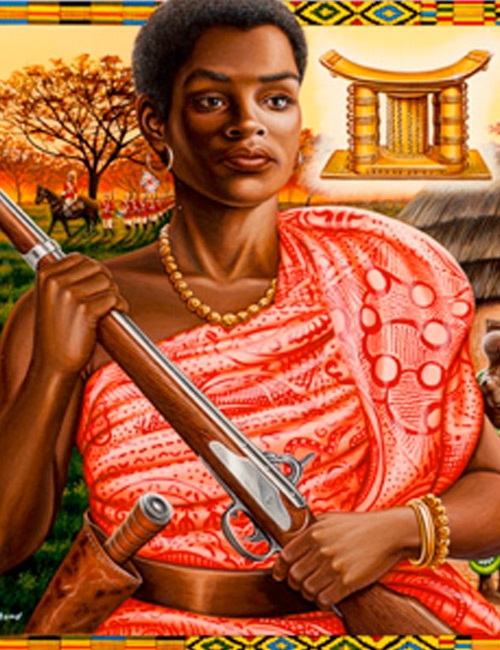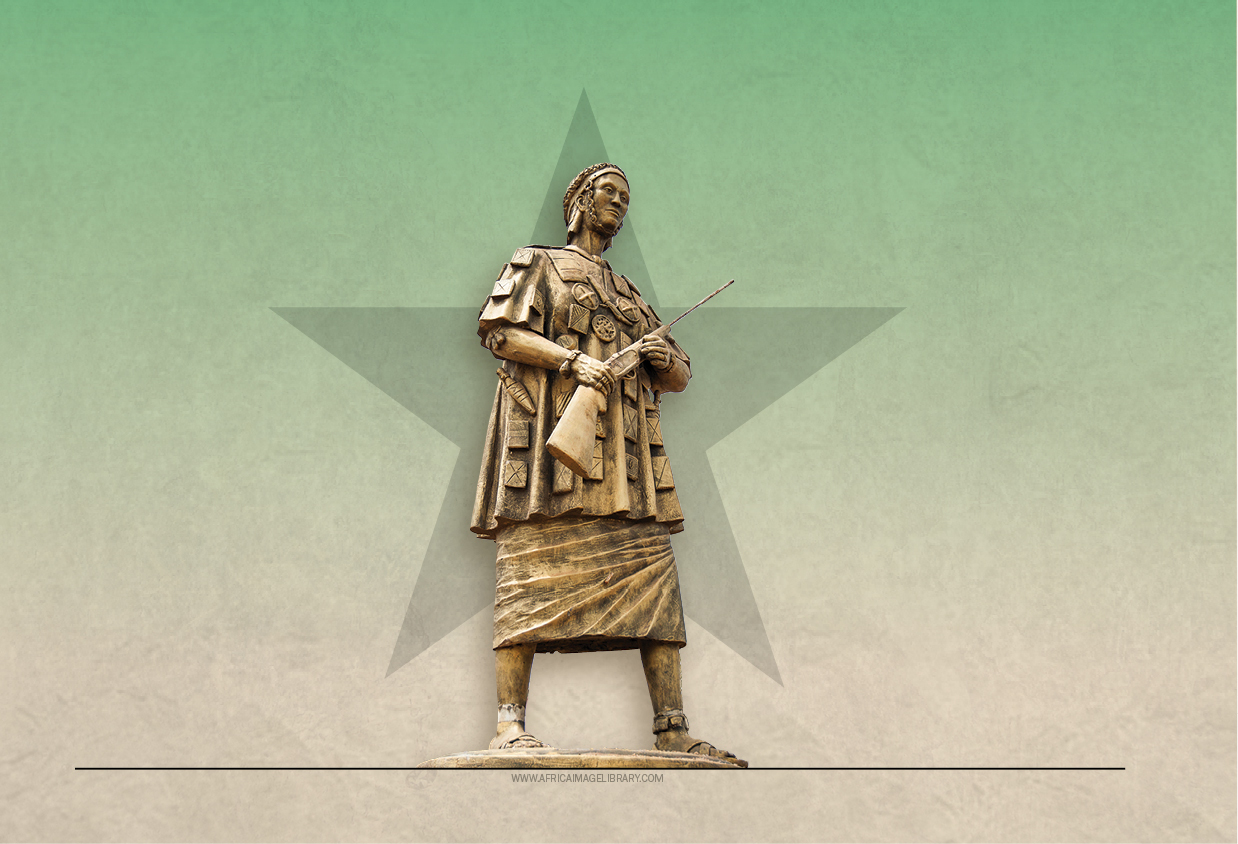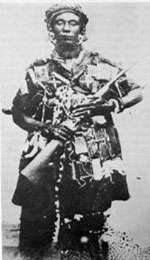In the heart of West Africa, a remarkable story of resistance blazed against colonial tyranny. The War of the Golden Stool stands as a powerful testament to African courage, led by an extraordinary woman who would challenge the might of the British Empire!

Yaa Asantewaa, Queen Mother of Ejisu – Image credit: BlackPast.org
The Ashanti Empire, rich in cultural heritage and proud tradition, faced an unprecedented threat in the late 19th century. British colonial powers sought not just territorial control, but the very soul of the Ashanti people – their sacred Golden Stool. This wasn’t merely a piece of treasure, but the spiritual embodiment of the Ashanti nation’s identity and sovereignty.

Historical depiction of Yaa Asantewaa’s resistance – Image credit: Dangerous Women Project
Enter Nana Yaa Asantewaa, a Queen Mother whose name would become synonymous with resistance. When British Governor Frederick Hodgson demanded the Golden Stool – a request that was both insulting and impossible – she stood up where many men hesitated. In a legendary moment that would echo through history, she challenged the male leaders, declaring, “If you men of Ashanti will not go forward, then we will. We, the women, will. I shall call my fellow women. We will fight the white men. We will fight till the last of us falls in the battlefields.”
Her words were more than rhetoric. In 1900, Yaa Asantewaa led an army of 5,000 warriors against the British, becoming the first and only woman in Ashanti history to lead a major military campaign. The siege of Kumasi Fort became a symbol of African resistance, with Ashanti warriors demonstrating extraordinary courage against a technologically superior colonial force.

Memorial statue honoring Yaa Asantewaa’s legacy – Image credit: ADF Magazine
The conflict was brutal and costly. Over 2,000 Ashanti warriors and approximately 1,000 British troops lost their lives during the six-month war. Despite being ultimately defeated, the Ashanti achieved a moral victory. The British never obtained the Golden Stool – a fake replica was presented, while the real stool remained hidden, preserving the nation’s spiritual heart.
Yaa Asantewaa’s resistance came at a personal cost. She was captured and exiled to the Seychelles, where she remained until her death in 1921. Yet, her legacy continued to inspire. Her dream of independence would be realized in 1957 when Ghana became the first West African nation to break free from colonial rule.
Today, Yaa Asantewaa is remembered not just as a warrior, but as a symbol of African dignity, resistance, and the indomitable spirit of a people who refused to be silenced. Her story reminds us that true courage knows no gender, and that the fight for freedom is a universal human endeavor.
The Golden Stool still exists, a powerful reminder of the Ashanti people’s resilience. It continues to be used in coronation ceremonies, symbolizing the enduring spirit of a nation that refused to be conquered.
References:
BlackPast – Yaa Asantewaa Biography – link
Dangerous Women Project – Yaa Asantewaa – link
ADF Magazine – Nana Yaa Asantewaa and the War of the Golden Stool – link
Categories: African History, Colonial Resistance, Cultural Heritage, History, War History, Women's History
Tags: African History, Ashanti Empire, Colonial Resistance, Female Leadership, Ghana History, Golden Stool War, Yaa Asantewaa
Religion: Traditional Ashanti Religion
Country of Origin: Ghana
Topic: Historical Resistance
Ethnicity: Ashanti


